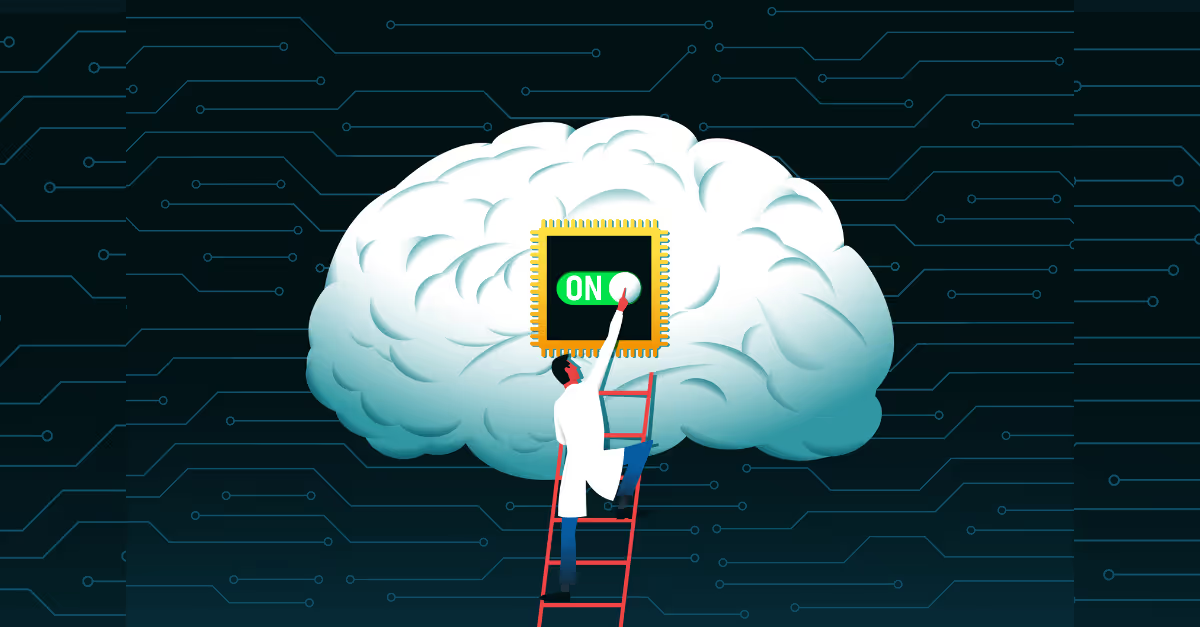As we continue to ride the AI-wave, it’s becoming increasingly clear that organisations want to jump on the AI train. In fact, Salesforce’s State of Data & Analytics report shows that 77% of business leaders fear missing out on the GenAI hype for their company.
There is no way around it anymore. AI will only become more prominent in our daily lives and daily flow of work. Something many companies are looking to capitalise on, but only very few currently succeed at. Research from Accenture shows that only 31% of their clients indicate that they’re managing their data effectively.
So, for many organisations today, there’s a large gap between the demand of doing something with AI and having the capabilities of operationalising AI across the business.
And one of the biggest blockers of doing more with AI, is data.

1. Does your data strategy match your AI ambition?
You’ve probably heard the question before: “Does your AI strategy match your data strategy?”. And whilst that is a very good question to ask yourself, the better question would be; “Does your data + AI strategy match your overall company strategy?”.
What does your organisation want to achieve? What are the business goals and objectives? Answering these fundamental questions is the starting point of your data + AI strategy.
It’s only when you fully understand what the business is looking to achieve, that you’re able to identify data + AI projects that will help the business accelerate towards these goals.
Organisations are looking to leverage AI across the business now more than ever before, thinking it can be an engine for their growth. But if AI can be an engine for growth, data is the fuel for that AI engine.
So let’s quickly discover why data is so important for AI.
2. Why is data so important to AI?
In many cases there is no data strategy to begin with. Compounding that with a fragmented data estate where data is disconnected, and you’ll know that it will be hard to get an AI prototype into production.
The reason for that is simple: AI is only as good as the data that underlies it. Your AI model needs the right data in order to operate properly.
It won’t work without it.
Think of it like this: when you’re creating a prompt, the output of the AI model really relies on the quality of the prompt. You can prompt the AI model to generate an email to invite a prospect to a sales event. It will work fine, but it probably will end up being a generic email.
Yes, it saves you time. But it doesn’t quite get you what you had in mind.
This is where your data comes in. Ideally, for the AI model to work properly, all the relevant data that your company has, needs to be automatically shared with the AI model.
You have to give the AI model the right context about the prompt, so that it generates an output of high quality, without a lot of heavy lifting from the user.
So, now that you understand why data is so important to AI, let’s dive a little deeper into how you can start to prepare your data for AI.
3. How to prepare your data for AI
Preparing your data for AI basically involves three key steps: data ingestion, data modelling and data mapping.
Let’s break it down step by step.
3.1 Data ingestion
Data ingestion is the process of gathering data from various sources and bringing it into a system or database - like Salesforce Data Cloud or Snowflake - so that it can be stored and used for analysis and other data activation purposes like AI agents, etc.
The first step of the data ingestion process is to identify the different sources from which data is ingested. This can include internal sources such as databases and business applications, as well as external sources such as APIs or third party data providers.
With all your different data sources identified, you then need to extract the data. This could involve querying databases, accessing APIs, or parsing files to ensure that you have the exact right data you need.
This extracted data might need to be transformed because you want to ensure that your data is standardised, cleansed and formatted appropriately for downstream analysis and activation. This could involve tasks like data normalisation, aggregation and enrichment.
Data quality assurance is extremely important here, because you want to make sure that the ingested data is accurate, complete and consistent.
3.2 Data modelling
Data modelling is the process of organising and structuring data in a way that makes it easier to understand and work with. It defines the relationships between different pieces of data and how they’re stored in a database.
Understanding your data is key before you start mapping it. In any data project, whether it’s for analysis or feeding it into a data cloud platform like Salesforce Data Cloud, the data foundation is going to lie in comprehending the data itself.
Take inventory of your data
Building a data dictionary will help you do just that. At a bare minimum, you want your data dictionary to capture the name and description of each data field as well as its data type. You can also include any constraints or validation rules, and more importantly, its relationship with other data fields.
Inspect field level data
With a data dictionary or inventory created for each source system, the next step is to closely examine the field level data within each source object and determine its accuracy. You’re going to need to determine which data model objects and the fields it should be mapped to.
Here, you’ll be laying the groundwork for your data mapping journey, ensuring that you understand the nuances of your data and how it’s going to align with your desired data model.
3.3 Data mapping
Data mapping is the process of matching the data fields or elements from one source to another. It ensures that data from different systems or formats can be properly understood and used together.
This step involves translating your data model design into actionable configurations within your data infrastructure.
4. Great data leads to AI success
Good data is the cornerstone of successful AI implementation, acting as a fundamental strategic asset that enables AI systems to perform at their best.
When data is well-prepared, clean, and consistently updated, it enhances the efficiency of AI processes by allowing for more accurate analyses and reliable automation. This leads to significant time savings and reduced manual effort as AI tools can effectively handle tasks like customer segmentation, predictive maintenance, or automated responses.
Accuracy is another critical benefit of good data in AI applications. AI models rely on quality data to make precise predictions, identify patterns, and generate actionable insights.
With accurate data, AI can optimise decision-making processes across various business functions, from marketing to operations, enabling organisations to respond proactively to emerging trends and customer needs.
Moreover, the value of good data extends to the insights AI can surface. High-quality data feeds allow AI systems to provide deeper and more relevant insights, which are crucial for strategic planning and competitive analysis. These insights help businesses anticipate market shifts, understand consumer behaviour in granular detail, and innovate effectively.
In summary, prioritising good data preparation not only enhances the current operational efficiency and accuracy of AI applications but also sets the foundation for sustained strategic advantages in a data-driven business landscape.























